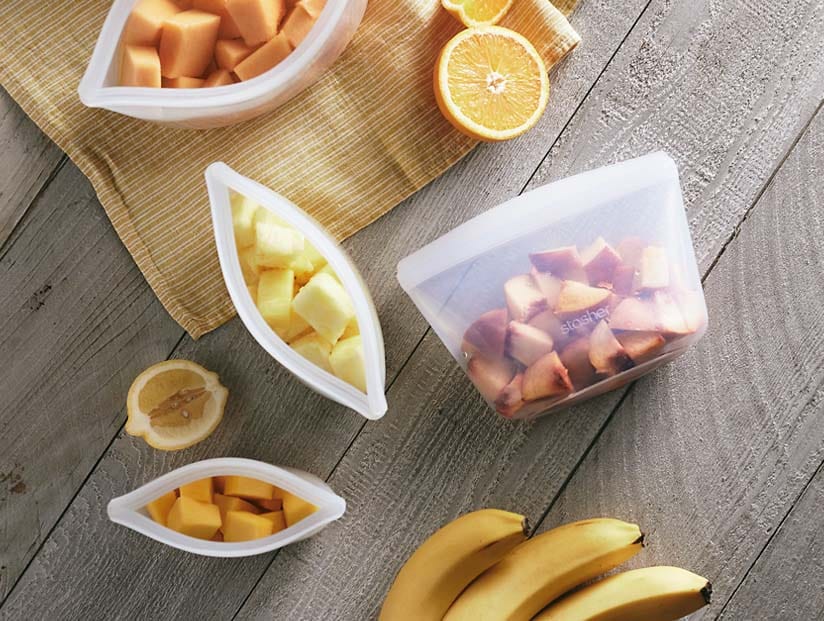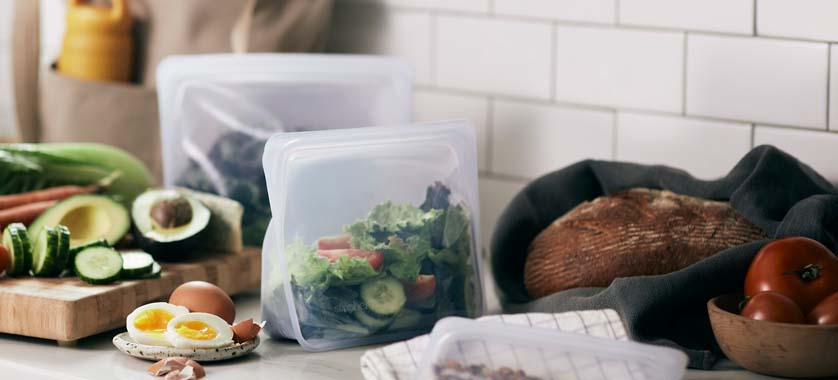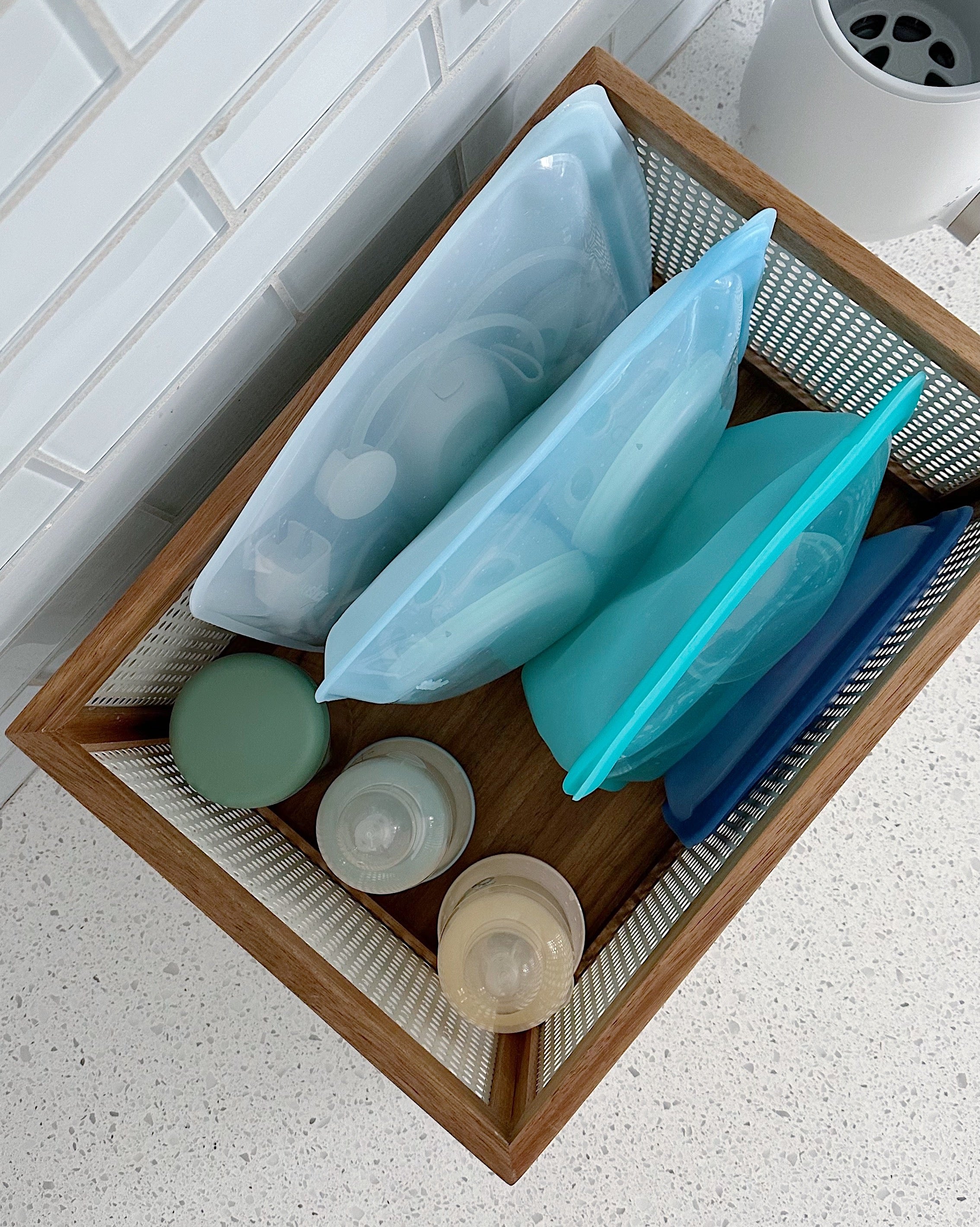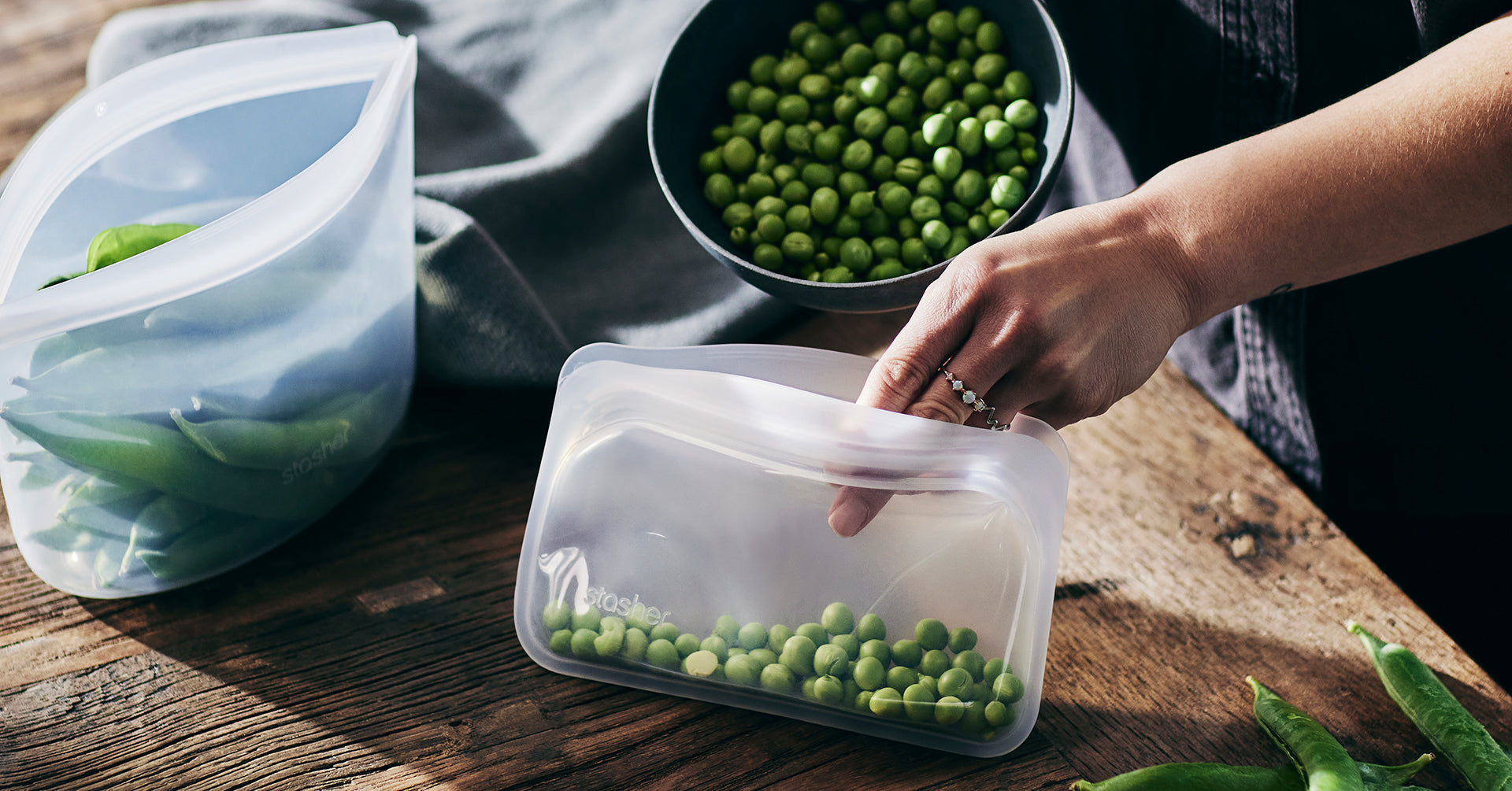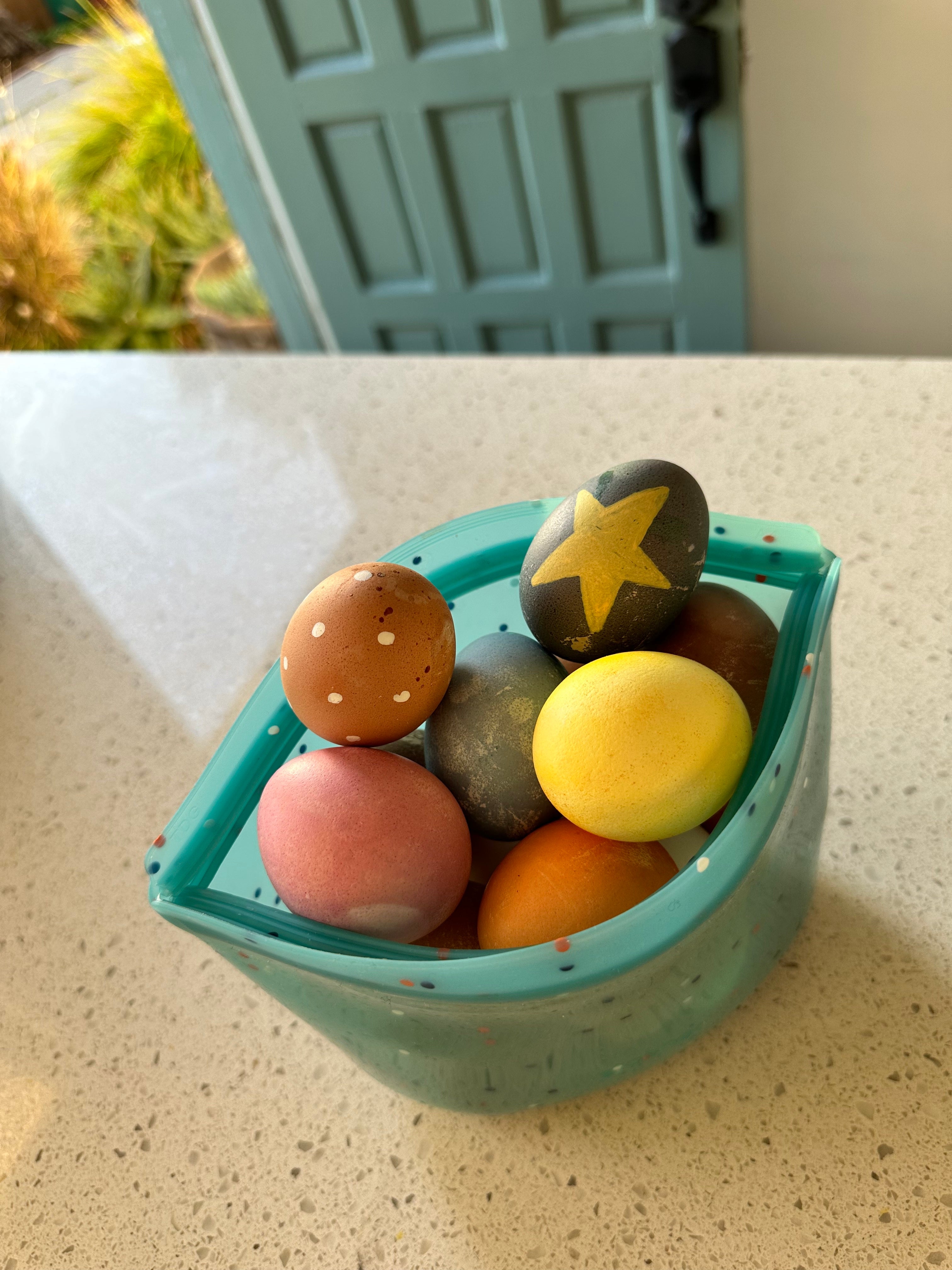
How to Naturally Dye Eggs with Veggie Scraps
Spring has spring, and that means it's time for one of our favorite traditions — decorating Easter eggs! But this year, we're taking a different approach. Instead of reaching for those artificial dyes that come in plastic bottles, let's get creative and eco-friendly by using leftover veggie scraps to “naturally” dye our eggs. Not only does this method produce beautiful, unique colors, but it also helps combat food waste.
In this test, we used some common veggie scraps that we love storing in a Stasher bag to discover which best dyed our eggs and which left more to be desired. Just remember that your egg color will make a difference, too — white eggs were more vibrant whereas brown eggs were more subtle.
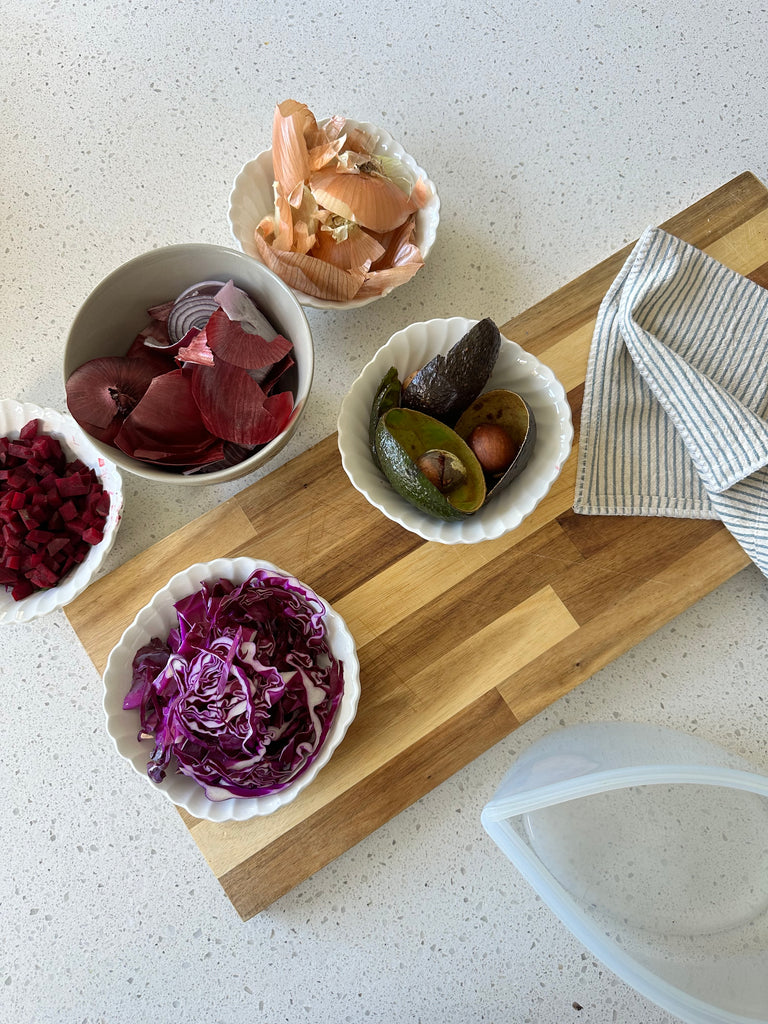
Making the Dyes
Follow this guide for step-by-step instructions! First, boil each veggie scrap with 1:1 ratio of water on the stove and simmer for 15 to 30 minutes. Once the color is slightly darker than your intended result, cool to room temperature and pour the dye through a strainer into a glass container.
To finalize the dye, add a 1:1 ratio of white vinegar. You can now add your eggs directly into the dye container and let sit, fully submerged, in the fridge for several hours to overnight. Give your eggs a few extra soaks to make the color darker!
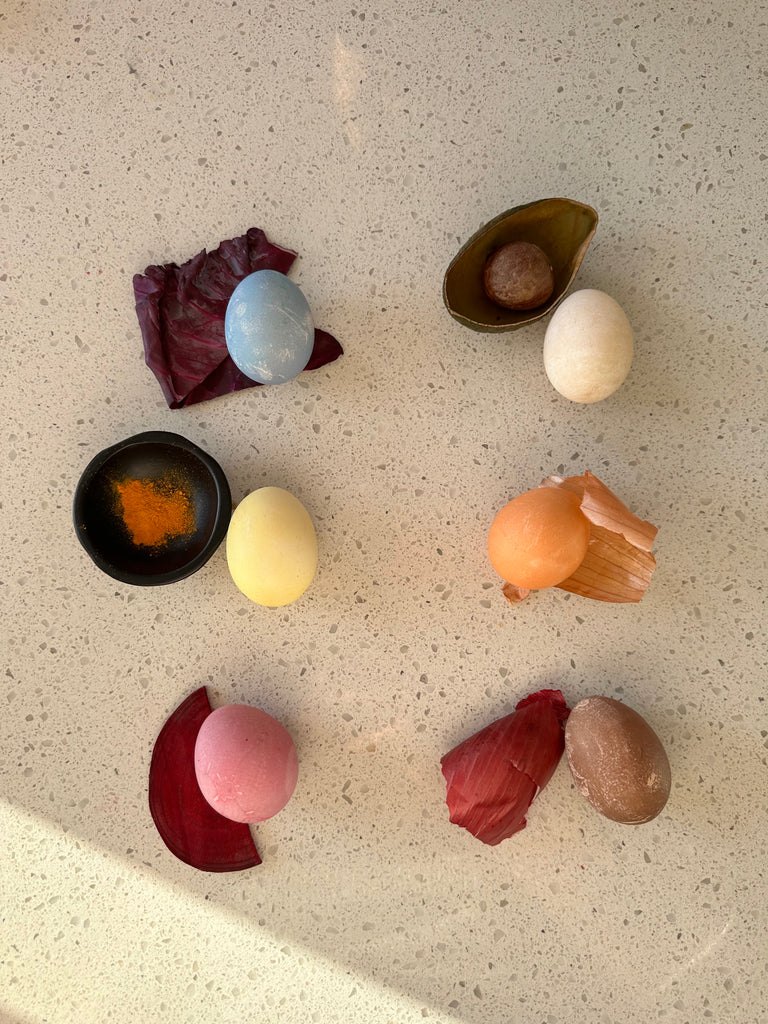
Sliced Beets 👍
This pink hue wasn’t much of a surprise considering how much beet juice can stain! We found this option perfect for adding a touch of sweetness to our egg decorations.
Turmeric Powder 👍
Also not surprisingly, the powder delivered a vibrant yellow hue, bringing a splash of sunshine that definitely made us think of spring.
Purple Cabbage 👍
One of the standout stars of our experiment, the cabbage turned our eggs into a beautiful shade of blue that we weren’t expecting.
Yellow Onion Skins 👎
We found that the yellow onion skins produced a rich, earthy hue on white eggs that may work for more rustic decorations but isn’t something regular brown eggs don’t already provide. You’ll need LOTS of onion skins!
Red Onion Skins 👎
Despite high hopes, red onion skins yielded only a faint tint on the eggs, reminding us that not every natural dye experiment is a success.
Avocado Skins 👎
While they left a subtle hue, we found avocado skins to be the least effective at dying eggs compared to all the other scraps we experimented with. However, we did have a hard avocado . . . a ripe one may produce a different result!
Get Creative with Your Easter Eggs
Now that you know how easy it is to dye Easter eggs with veggie scraps, why not give it a try yourself? By embracing natural dyes and finding creative ways to repurpose kitchen scraps, we can make a positive impact on the planet while still enjoying all the festive fun this season brings.
Share your favorite sustainable egg designs with us on social @stasherbag.



